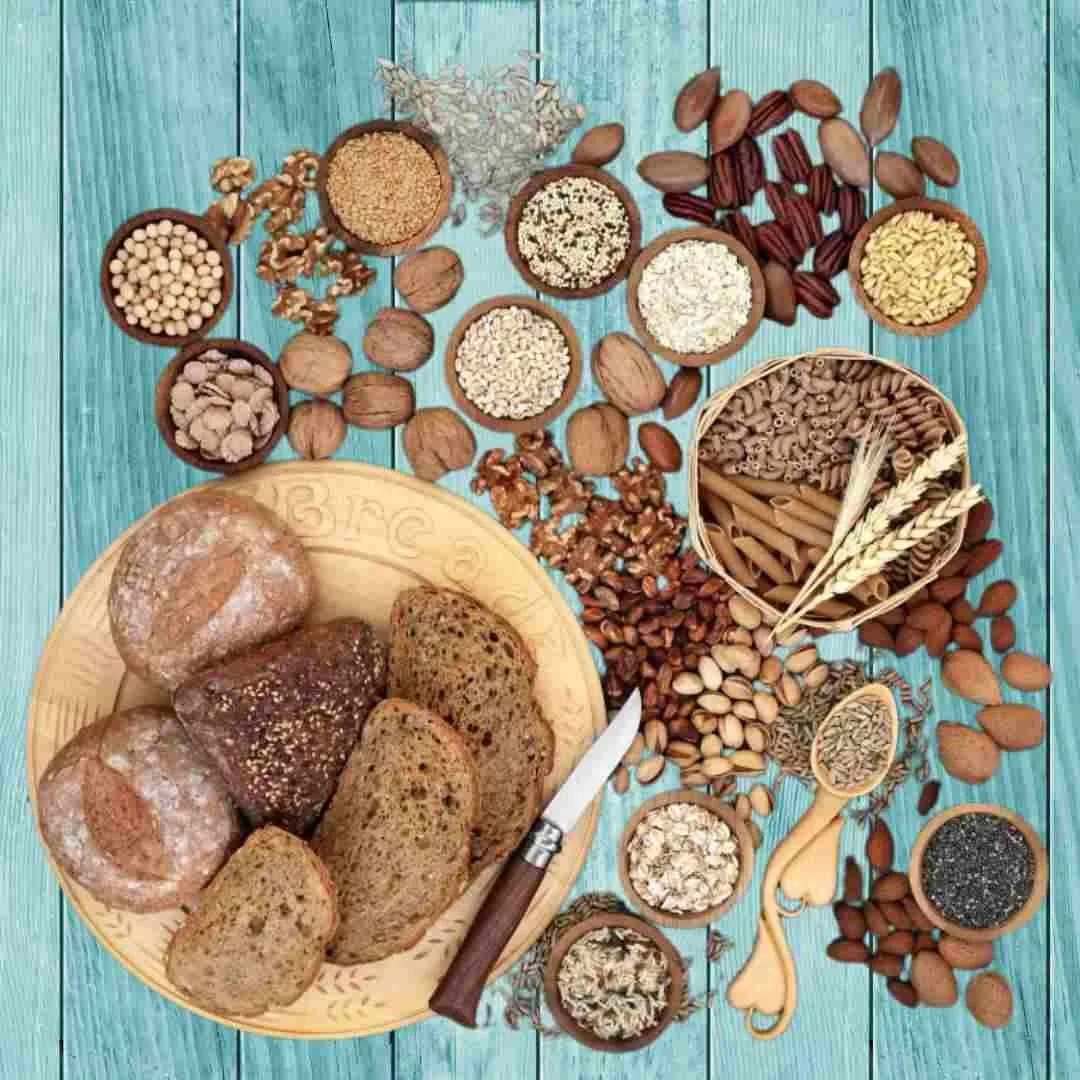Phytates: Friend or Foe? Exploring their Pros and Cons
Phytates have become a hot topic in the world of nutrition and health, leaving many people questioning whether these naturally occurring compounds are friends or foes.
In this article, we delve into the pros and cons of phytates to help you better understand their impact on your overall well-being.
Plant-based foods such as grains, legumes, and nuts commonly contain phytates, also known as phytic acid. Experts have praised them for their potential health benefits, including antioxidant and anti-inflammatory properties.
However, on the downside, studies have shown that phytates bind with certain minerals, reducing their bioavailability in the body. Some research suggests that various processing techniques can reduce the negative effects of phytates.
Join me as we explore the intricate relationship between phytates and your health. By understanding the pros and cons, you can make informed choices about including phytate-rich foods in your diet or using supplements.
What are the best food sources of phytates?
This table shows the best dietary sources of phytates.
(1)
As you can tell, the phytate content varies a lot. Factors like the variety, growing environment and the climate in which they're grown can all affect the amount of phytate in foods.
Potential health benefits of phytates
One of the key advantages of phytates is their antioxidant properties. Researchers have found that these compounds scavenge harmful free radicals in the body, protecting cells from oxidative stress (2). Their antioxidant effects are so strong the meat industry uses phytates to prevent the fat oxidation that starts when animals are slaughtered (3).
Studies also suggest that phytates may have anti-inflammatory effects, which can further contribute to overall health and well-being (4).
Phytates' anti-cancer effects are remarkable. They can influence all the pathways that are involved in malignancies:
cell growth and proliferation
angiogenesis (the ability to make new blood vessels to support tumours)
metastasis
apoptosis (the natural death of cells)
differentiation (how much or how little tumour tissue looks like the normal tissue it came from. Well differentiated cells in tumours usually grow and spread more slowly) (5).
Phytates also stimulate the production of Natural Killer (NK) cells that reduce the incidence of tumours (5).
Myoinositol, which is a type of phytate, used as a supplement at 18 g/day, reduced the progression of lung lesions that would have developed into lung cancer (5).
In animal studies, researchers added phytates to the water of rats and mice that had been fed carcinogens to stimulate colon cancers. The animals had a lower cancer risk (5).
Similar studies showed an effect on liver, lung, breast, prostate and skin cancers. It also inhibited the growth of rhabdomyosarcoma, a cancer of the soft tissue, usually muscle, that is usually found in children (5).
Phytates are abundant in cereals and legumes, so a group of researchers conducted a controlled trial to establish whether the anti-cancer effects were because of their high fibre intake or the phytates. The results showed it was the phytates that were effective (5).
Colon cancer rates are much lower in developing countries and the theory is that their diets, which are much higher in fibre than the average American diet, may be responsible. But a study showed that only diets high in phytates had this protective effect (6).
In laboratory studies, phytates were effective in controlling the growth of prostate and breast cancer cells and promoting their apoptosis (6).
Phytates help reverse osteoporosis
Researchers have shown that eating foods high in phytates, such as in the Mediterranean diet, can reverse osteoporosis. Eating at least 307 mg per day of phytates prevents bone loss. This is easily achievable: the Mediterranean diet gives an intake of between one and 2 grams a day of phytates (5).
This is important for cancer patients, as some treatments used for cancer increase the risk of osteoporosis. These include hormone therapies and corticosteroids.
Type II diabetes, cardiovascular health and phytates
Type II diabetes is an endocrine disorder. Its major symptom is high blood sugar levels. High blood sugar can lead to cardiovascular problems and is also associated with carcinogenesis.
Phytates, such as those found in nuts, wholegrains and legumes, can help to stabilise blood sugar levels by reducing the rate of carbohydrate digestion and absorption (5).
Phytates also help prevent cardiovascular disease, not just by affecting blood sugar but by other mechanisms too.
Because of their ability to bind with iron, phytates can reduce levels of free radicals and oxidative stress (5), which is one driver of atherosclerosis.
Another driver of atherosclerosis is a buildup of calcium deposits in the coronary arteries. Researchers found phytates inhibit the amount of calcification in the body, and animal studies confirmed rats fed phytates had less calcification in the aorta (5). Elderly patients with high levels of phytates in their urine, showing that their diets contained phytates, also had less calcification around the valves in the heart (5).
Phytates also reduce leptin and increase adiponectin levels. Leptin is the hunger hormone, so phytates reduce hunger, so they help with weight control. Higher levels of adiponectin are antioxidant and reduce the levels of C‑reactive protein and other inflammatory markers (5).
Some phytate forms can affect cholesterol levels too, reducing total cholesterol, LDL and triglycerides, and increasing HDL (5).
Phytates reduce the risk of developing kidney stones
Kidney stones are often the result of the crystallisation of calcium salts in the kidneys. Just as phytates affect calcification in the heart, they also affect it in the kidneys.
A considerable number of population studies show that a diet high in phytates reduces the risk of developing kidney stones (5).
Phytates and neurodegenerative diseases
The two most common neurodegenerative diseases are Alzheimer's Disease and Parkinson's Disease. They both share some common mechanisms:
Oxidative stress
Neuroinflammation
Iron accumulation in the brain
Protein aggregation
Phytates help with all these issues. They are antioxidant and anti-inflammatory, they bind to iron and reduce its availability, and they induce autophagy. Autophagy is a natural process used by the body to remove debris and recycle it, so it can help with protein aggregation (7).
Exploring the cons of phytates
While phytates offer potential health benefits, they also have drawbacks that need to be considered. Let's examine the cons of phytates.
Potential negative effects of phytates on mineral absorption
One of the primary concerns associated with phytates is their ability to bind with certain minerals, such as iron, zinc, and calcium. Binding reduces the bioavailability of these minerals, although it only affects minerals eaten at the same meal, and it's only likely to affect people who eat high amounts of phytate-rich foods as part of a poor diet (8). It is possible to demonstrate it in laboratory testing, but it is much less clear-cut in the human digestive system.
In a 3 month randomised controlled trial, researchers compared two formulations of wholemeal bread, one with high phytate content and the other with low phytate content. The difference in phytate content didn't change the iron levels in the subjects who ate the bread (5).
A similar trial with maize showed the same result with iron levels (5).
Several human trials have shown that 2 g a day of phytates didn't affect mineral status (5).
However, this is a particular problem for individuals who are vegetarian, as phytates can contribute to mineral deficiencies if not properly managed. Iron, zinc and calcium are plentiful in animal products, but less so in vegetarian foods. And vegetarian diets are usually high in phytates.
In developed countries, many of the foods consumed by vegetarians contain mineral supplements and research shows that most vegetarians don't suffer from mineral deficiencies (9). But in developing countries, sometimes diets are based on cereals and legumes, all of which are high in both phytates and minerals. This may well cause deficiencies (7).
There are other high-risk categories:
People who have osteoporosis and also calcium deficiency, those with anaemia caused by iron deficiency, or anyone deficient in zinc.
Those at high risk of malnutrition because of eating disorders or lack of access to nutritious foods.
People with malabsorption problems.
However, there are ways to reduce the risk.
Strategies to reduce phytate content in foods
For anyone who is concerned about the potential negative effects of phytates on mineral absorption, there are strategies you can use to reduce the phytate content in foods. Soaking, fermenting, and cooking foods can help break down phytates and improve mineral bioavailability.
For example, one study pre-soaked quinoa and found that it reduced phytate content by 70% whilst also more than doubling iron availability (10).
Sprouting and lactic acid fermentation are also an effective way to remove phytate content almost completely (10).
Soaking beans for at least 12 hours before rinsing and cooking them in fresh water removes about 60% of phytates (10).
Using yeast to make bread reduces phytate levels by 32% whilst sourdough is even more effective, with a 62% reduction (10).
Various cultures have used these techniques in traditional food preparation methods to boost nutrient absorption while still benefiting from the other health-promoting properties of phytates.
Conclusion: The role of phytates in a balanced diet
As you can see, there are both pros and cons to eating high phytate foods. While they have potential health benefits, they can also hinder the absorption of essential minerals. But if you're eating a balanced diet, unless you have specific issues as outlined above, I believe the pros outweigh the cons.
If you are at high risk of mineral deficiencies, use strategies to reduce phytate content in foods, such as soaking, fermenting, or cooking. Then you can still enjoy the positive aspects of phytates while minimising the potential negative effects on mineral absorption.
References
Arnarson A. Phytic acid 101: Everything you need to know. Healthline. November 28, 2023. Accessed February 6, 2024. https://www.healthline.com/nutrition/phytic-acid-101#in-food.
Schlemmer U, Frølich W, Prieto RM, Grases F. Phytate in foods and significance for humans: Food sources, intake, processing, bioavailability, protective role and analysis. Molecular Nutrition & Food Research. 2009;53(S2):S330-S375. doi:10.1002/mnfr.200900099
Stodolak B, Starzyńska-Janiszewska A, Czyszczoń M, Żyła K. The effect of phytic acid on oxidative stability of raw and cooked meat. Food Chemistry. 2007;101(3):1041-1045. doi:10.1016/j.foodchem.2006.02.061
Armah SM. Association between Phytate Intake and C-reactive protein concentration among people with overweight or obesity: A cross-sectional study using nhanes 2009/2010. International Journal of Environmental Research and Public Health. 2019;16(9):1549. doi:10.3390/ijerph16091549
Pujol A, Sanchis P, Grases F, Masmiquel L. Phytate Intake, health and disease: "Let thy food be thy medicine and medicine be thy food." Antioxidants. 2023;12(1):146. doi:10.3390/antiox12010146
Abdulwaliyu I, Arekemase SO, Adudu JA, Batari ML, Egbule MN, Okoduwa SIR. Investigation of the medicinal significance of phytic acid as an indispensable anti-nutrient in diseases. Clinical Nutrition Experimental. 2019;28:42-61. doi:10.1016/j.yclnex.2019.10.002
Chen Y, Yuan W, Xu Q, Reddy MB. Neuroprotection of phytic acid in parkinson's and alzheimer's disease. Journal of Functional Foods. 2023;110:105856. doi:10.1016/j.jff.2023.105856
WebMD Editorial Contributors. 4 foods high in phytic acid and why you should avoid it. WebMD. November 29, 2022. Accessed February 12, 2024. https://www.webmd.com/diet/foods-high-in-phytic-acid.
Gibson RS. Content and bioavailability of trace elements in vegetarian diets. The American Journal of Clinical Nutrition. 1994;59(5):1223S-1232S. doi:10.1093/ajcn/59.5.1223s
Robbins O. What are Phytates? and do you need to avoid them? Food Revolution Network. April 23, 2021. Accessed February 9, 2024. https://foodrevolution.org/blog/phytates/.


